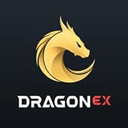
Review on Holo by francis fernandez

Holo: an opportunity to participate in the storage and creation of decentralized applications and earn income from it
Many have been the blockchains that are based on the rental of computing potential for hosting tasks and in exchange for delivering a digital reward to the owners of these equipment.
This process allows at the same time to create a massive network to store a large number of applications safely under an encrypted infrastructure accounting system.
The Holo developers considered this project viable for this purpose and decided to launch it on the market at the end of April 2018.
Holo is a blockchain network that serves as a digital tool for the development of decentralized applications distributed on several platforms integrated under the same commercial ecosystem.
From the above, we can deduce that Holo has two fundamental purposes:
1-Make available to developers a technological tool to store their smart applications safely and at low cost.
2- Allow collaborators to contribute to the creation of HApps and obtain rewards in exchange for it.
In this sense, the Holo platform has served as a bridge between those users who create applications and those who wish to contribute the potential value of their teams to obtain a reward in return. The latter will become a host when they rent their equipment to receive HoloFuel, which is the payment received by the hosts that perform this service.
In this process the user has the option of deciding which Happs will participate in, setting their commissions and establishing priorities between applications.
How does the Holo cryptocurrency work?
Holo's digital currency consists of an ERC20 token; which is compatible with popular digital wallets on the market such as MetaMask, TrustWallet and MyEtherWallet.
Pros
- Allows the user to lease their computing power in exchange for receiving income.
- It offers the opportunity for developers to participate in the creation of decentralized applications through the use of the blockchain.
- Their token is recognized in the market with a high acceptance in exchanges and digital wallets.
- Allows application hosting economically and reliably.
Cons
- The maximum issuance limit of the cryptocurrency is unknown.













